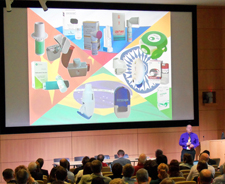
David Howlett, PharmaDelivery Systems, discusses the global inhaler market
The organizers of the recent Orlando Inhalation Conference have made all of the presentations from the meeting available to the public.
Approximately 200 OINDP specialists gathered March 18-20, 2014 at the University of Florida Research and Academic Center in Orlando, Florida for a conference co-hosted by the International Pharmaceutical Aerosol Consortium on Regulation and Science (IPAC-RS) and the University of Florida. Among the participants were seven representatives from the US FDA, three regulators from the Brazilian National Health Surveillance Agency (ANVISA), and one from Spain’s Agencia Española de Medicamentos y Productos Sanitarios.
Approximately half of the attendees came from the US, along with 27 from the UK, 16 from Brazil, and the remainder from the rest of the world, including a number of European and Scandinavian countries, plus India, Iraq, Taiwan, and China.
Posting the presentations from the meeting is in line with IPAC-RS’s mission, which is to “advance the science of orally inhaled and nasal drug products (OINDP) by collecting and analyzing data, and conducting joint research and development projects.” The the complete agenda for the meeting, including all of the slide presentations, is available to anyone interested.
Martin Oliver, Director, Branded Generics at Vectura and co-chair of the conference organizing committee commented, “IPAC-RS was extremely pleased to collaborate with The University of Florida to create a conference allowing unprecedented interactions between industry, academia, and regulatory authorities in the field of scientific issues related to the regulation of inhaled products. The conference was a great success and delivered on the purpose of IPAC-RS: improve public health by facilitating the availability of safe, effective, and quality OINDP.”
IPAC-RS Chair Stefan Leiner of Boehringer Ingelheim added, “The conference brought together medical and pharmaceutical experts to discuss bioequivalence requirements for inhaled and nasal products. These experts presented on current R&D and regulatory topics, exchanged views, discussed open questions and recent results. Areas of intense research and of likely scientific breakthrough were identified.”


